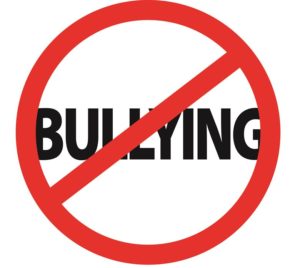
Does workers’ compensation insurance cover mental, and manifesting physical injuries resulting from workplace bullying? A recent Forbes online article cited a survey concluding that 75% of the U.S. workforce reported having experienced workplace bullying.[1] Another study cited by the Workplace Bullying Institute suggested that absenteeism and lower production costs businesses $4 billion annually.[2] Regardless of the accuracy of the statistics, with the increased use of social media, workplace bullying can start inside of the workplace, or, start outside of the workplace and permeate into daily business operations.
One definition of workplace bullying advanced in Psychology Today was “workplace bullying refers to “situations where an employee repeatedly and over a prolonged time period is exposed to harassing behavior from one or more colleagues (including subordinates and leaders) and where the targeted person is unable to defend him-/herself against this systematic mistreatment.”[3] Researches have identified both internal and external causes of workplace bullying. As noted below, identifying the cause of workplace bullying is relevant to unwinding the legal liabilities associated with resulting injuries. Types of injuries associated with this behavior includes “physical and psychological symptoms, including headaches, chronic neck pain, fibromyalgia, type 2 diabetes, sleep problems, anxiety, depression, post-traumatic stress symptoms, suicidal ideation, and others.” [4]
The current statutory law in Colorado does not specifically address a company’s insurance liability for workplace bullying injuries. However, those injuries can be covered under the exclusive remedy of the Colorado’s Workers’ Compensation Act and the associated insurance policies. Bullying injuries may be treated as assaults for purposes of liability. Assaults that arise out of work are generally compensable injuries, while those that are purely personal are not.[5] Assaults caused by a natural force, or an event that any employee would be exposed to are also compensable assaults. Before addressing the nature of the injury, the business should investigate whether the bullying, for example verbal abuse or written harassments, arose out of a personal dispute between employees or whether the bullying occurred within the parameters of the employees’ business relations. Any investigation should be undertaken consistent with a business’ employment policies and procedures for interviewing witnesses, reviewing internal documents such as email, and confiscating company phones or computers as evidence.
When a business determines that a workplace bullying event has occurred, the business ought to determine whether an actual injury was caused by the perpetrator(s) conduct. The law is especially tricky when unpacking whether an injury occurred. While an employee may complain of stress or some other symptoms, especially to justify absenteeism, the claim may not always be a compensable injury. Section 8-43-301(2)(a), C.R.S., requires that an employee claiming a mental impairment provide a specific showing of a mental injury, including evidence supported by a licensed psychologist or psychiatrist. Additionally, whether the bullying itself was a crime of violence will also factor into the amount of benefits that could be owed to a victim-employee. Navigating through the patchwork of questions to determine liability hinges on the ability of a comprehensive investigation of the claim at the outset to determine its validity.
As always, if you have any questions regarding workers’ compensation insurance and laws, please contact us.
[1] https://www.forbes.com/sites/christinecomaford/2016/08/27/the-enormous-toll-workplace-bullying-takes-on-your-bottom-line/#5f464c0b5595
[2] https://www.workplacebullying.org/tag/workers-comp/
[3]https://www.psychologytoday.com/us/blog/finding-new-home/201809/workplace-bullying-causes-effects-and-prevention
[4] Id.
[5] Velasquez v. Industrial Commission, 41 Colo. App. 201,581 P.2d 748 (1978); In Re Questions Submitted by U.S. Court of Appeals, 759 P.2d 17, 23 (Colo. 1988).





